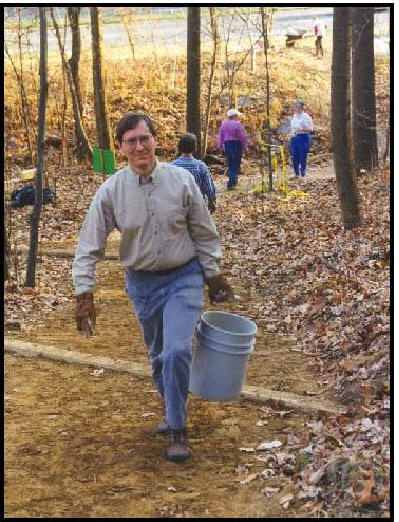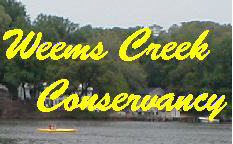|
Waterbars can be installed on steep slopes, especially where trails lead down the slope. Because a trail can become depressed or compacted overtime, it could then potentially ‘cup’ and collect water, channeling it downhill, causing erosion. ‘Bleeding’ or removal of water through the use of log, railroad tie or rock is a long established practice for reducing trail erosion.
Number and spacing depends on steepness of slope, the amount of water channeled by the trail, the construction of the treadway and the availability of places to divert water off the trail. Generally, the greater the slope, the greater the need for waterbars.
Waterbars should be placed near the top of the grade, to remove water before it causes damage. Additional waterbars should be placed periodically down the slope as necessary.
Rot-resistant log waterbars or preferably railroad ties should have a minimum diameter of 8-inches.
The waterbars should be seated with 50 percent of its diameter (or face) below ground surface. The treadway uphill from the bar should be graded gradually into the bar and extra soil packed on the treadway below the bar.
Rock waterbars should be made of flat, narrow rock set into a narrow but deep trench. Rocks should be butted end to end or overlapped in shingle fashion.
Waterbars should be placed at a 45 degree angle or greater angle to the trail.
Waterbars should receive annual maintenance, with all deposited debris being removed and packed on the trail on the downhill side of the bar.
To be sure that water cannot flow back onto the treadway, waterbars should extend off the trail, and be followed by a drainage ditch that clearly channels water into the woods.
|

Volunteers installing water bars on a MNCPPC trail.
|


 New Postings
New Postings Board
Board